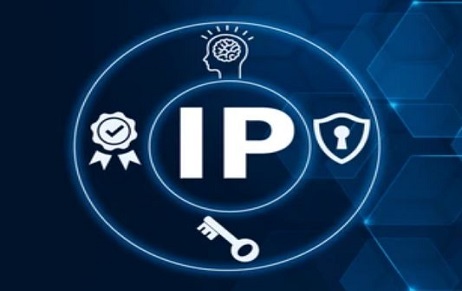Intellectual Property Rights (IPR) are like different keys for different locks. Just like every lock…
Intersection of Intellectual Property Law and Competition Law with respect to Cross Licensing Agreements
Introduction
The human mind is a marvel with an astonishing potential to transform ideas into practice and commercialize them in order to accrue benefits. This has led to the introduction of intellectual property rights which are a set of exclusionary rights as it excludes the world from enjoying a set of rights arising out an invention or creation, except the inventor or creator. However, the population and their necessities as well as demands have increased manifold which has culminated into a need to regularize invention by bilateral or multilateral collaborations in order to drive innovation and help the masses in increasing their access to latest technological developments along with preventing monopolization of patents. Hence, the concept of cross licensing agreement has originated with the intent to help various organizations in sharing patent licenses along with their rights and liabilities leading to their easier access to masses and reduction of monopolistic market tendencies.
Overview on Intellectual Property Law and Competition Law
Indian IP law is primarily designed to encourage innovation and creativity by providing inventors with exclusive rights to their creations for a specified period of time. The Indian statutory provisions pertaining to intellectual property are the Patents Act of 1970[1], the Trademarks Act of 1999[2] and the Copyright Act of 1957[3]. These laws establish the backbone of safeguarding all the rights accrued to various kinds of intellectual property.
However, the Competition Act of 2002[4] aims to protect the interests of consumers by preventing market practices that are monopolistic and discriminatory in nature.
Intersection of IP Laws and Competition Law
Intellectual property laws promote the enforcement and protection of exclusive rights of an inventor, however, competition law ensures that the exclusive rights to use, sell, and license intellectual property are not exploited in a way that is detrimental to competition.
In a cross-licensing agreement, two or more parties mutually agree to share a license for exploiting the subject matter of claims in their separate patents, creating a junction between intellectual property rights and competition law.[5] It is practiced in order to obtain external patent technical support which can improve the efficiency of patent use, avoid unnecessary repetitive research and development, concentrate the enterprises’ R&D costs, realize technological innovation, enhance the integration efficiency of market economic activities and avoid litigation or an infringement suit.
Cross-licensing agreements can both restrain and advance competition. From a competition law point of view, these understandings are ordinarily scrutinized beneath two fundamental concerns: the possibility of monopolization of market power and collusive behavior.
- Market Power: Cross-licensing can result in the accumulation and monopolization of market power within the hands of the big players of the market’s various industries. This can result into dominant firms perpetuating unfair trading practices or constraining market entry to small or emerging industries, leading to discriminatory practices.
- Collusion: Cross-licensing agreements could boost extreme collusion among firms that are competing with each other which results into disproportionate and discriminatory fixing of prices or twisting conditions of the market to the benefit of few which would harm overall innovation and competition.[6]
Legal Framework and Jurisprudence
The Competition Commission of India (CCI) examines cross-licensing agreements under the provisions of Section 3 of the Competition Act, 2002[7], which prohibits anti-competitive agreements. The assessment focuses on whether these agreements cause an appreciable adverse impact on competitive practices in India. The nature of the rights involved, the market structure and the practices of the entities partaking in such agreements are essential factors in the evaluation of the same.

The Indian legal framework encourages a balanced approach. For instance, in cases where cross-licensing agreements are necessary for technological advancement and benefit consumers by reducing costs and fostering innovation, such arrangements might be viewed favorably. However, this is contingent upon ensuring that such agreements do not close the market to new entrants and do not facilitate abuse of socio-economic capital of organizations or institutions. In the landmark case law titled Monsanto Holdings Pvt. Ltd. and Ors. Vs. Competition Commission of India and Ors. (2023)[8], the High Court established the parameters of the intersection between the Competition Act and Intellectual Property Laws. Specifically, the court held that Section 3(5) of the Competition Act, 2002 does not classify the lawful exercise of intellectual property rights as anti-competitive practices. Additionally, the intent behind such exclusion by the legislature was to exempt cross-licensing agreements from the scope of its scrutiny under the Competition Act, 2002. Hence, under normal circumstances, the Patents Act, 1970 will prevail over the Competition Act, 2002 where the Controller General of Patents has the responsibility to ensure that patent licences are free of restrictive or unfair trade practices. However, in case IP rights are misused for abuse of dominance as well as promoting antitrust and monopolistic tendencies in the market, a recourse can always be sought in the court of law.
Compliance Practices
The process of formulating a cross-licensing agreement has to be coupled with practices that ensure compliance with both IP and competition laws. These include maintaining transparency with respect to the aims and objectives of the agreement in order to prevent unfair trade practices, transferring of IP rights within a well defined scope and extent, preventing restriction of parties to interact with other parties in the market as well as reviewing and updating the cross-licensing agreements on a regular basis in order to mitigate anti-competitive practices and ensure due compliance with law.
Conclusion
The intersection of intellectual property laws and competition law with respect to cross-licensing agreements is a crucial element in ensuring that the rights of inventors are protected along with fair trade practices being followed. Hence, it is a delicate intersection which helps in transference of technological advances along with market expansion and diversification.
In the Indian context, the Competition Commission of India (CCI) and other organizations play a quintessential role in balancing innovation and commercialization. They ensures that cross-licensing agreements which include technology transfer along with empowering competitive and non-discriminatory market practices.
All the participants of various industries need to be flexible in terms of regulatory frameworks and consumer behaviour which result from technological advancements. This can be achieved by framing cross-licensing agreements in compliance with the latest laws and regulations that lie at the intersection of IP Laws and Competition Law.
Lastly, cross-licensing agreements represent the defining line that is to be drawn between encouraging innovation and ensuring fair competition. It is an example of our ability to make the most out of shared knowledge and adapt to the ever-changing and dynamic economy.
Author: Prachi Narayan, in case of any queries please contact/write back to us via email to chhavi@khuranaandkhurana.com or at IIPRD.
College: LC-1, Faculty of Law, Delhi University
[1] The Patents Act, 1970, No. 39, Acts of Parliament, 1970(India)
[2] The Trade Marks Act, 1999, No.47, Acts of Parliament, 1999(India)
[3] The Copyright Act, 1957, No. 14, Acts of Parliament, 1957(India)
[4] The Competition Act, 2002, No.12, Acts of Parliament, 2003 (India)
[5] Department of Industrial Policy and Promotion, Ministry of Commerce and Industry, Government of India, DISCUSSION PAPER ON STANDARD ESSENTIAL PATENTS AND THEIR AVAILABILITY ON FRAND TERMS, 3, 13 (2016), https://www.ipindia.gov.in/writereaddata/Portal/News/196_1_standardEssentialPaper_01March2016_1_.pdf
[6] DIRECTORATE FOR FINANCIAL AND ENTERPRISE AFFAIRS COMPETITION COMMITTEE, Organisation for Economic Co-operation and Development, Licensing of IP Rights and Competition Law, 3, 3, 25 (2019), https://one.oecd.org/document/DAF/COMP(2019)3/en/pdf
[7] The Competition Act, 2002, § 3, No.12, Acts of Parliament, 2003 (India)
[8] Monsanto Holdings Pvt. Ltd. and Ors. Vs. Competition Commission of India and Ors., MANU/DE/1078/2020



